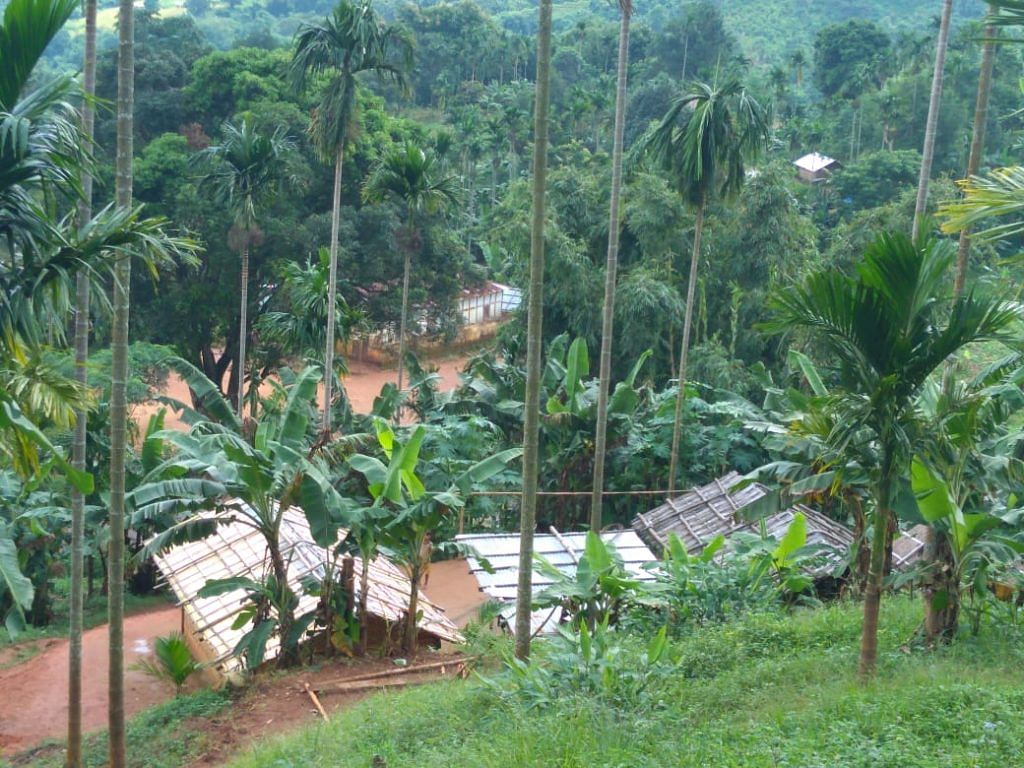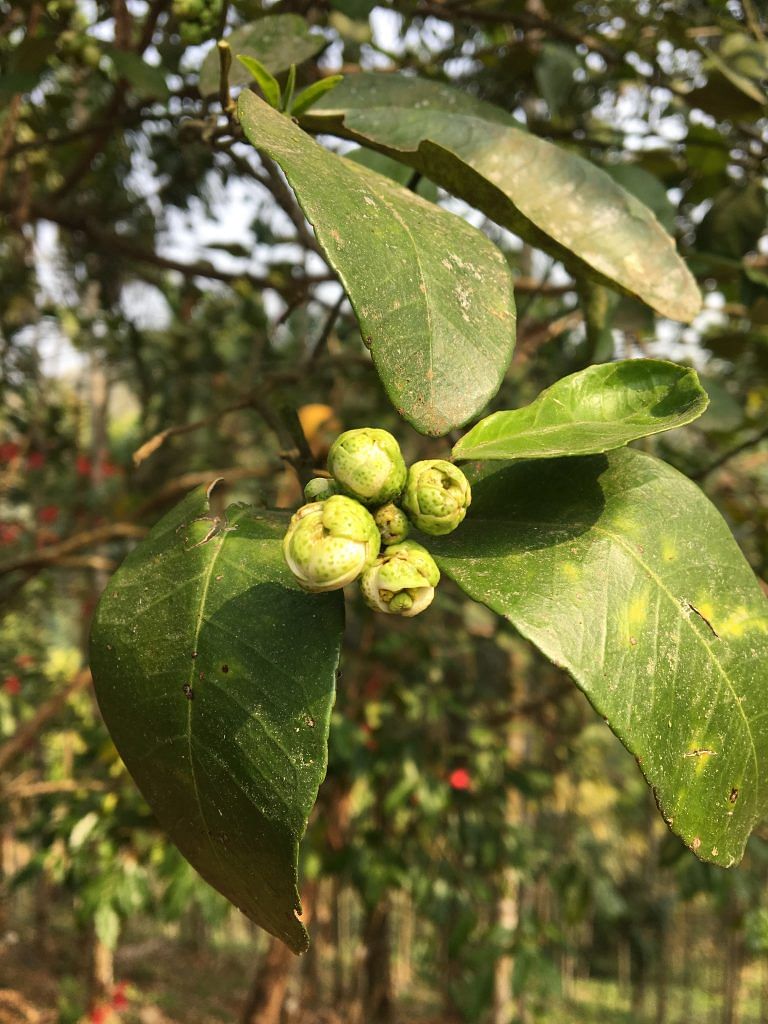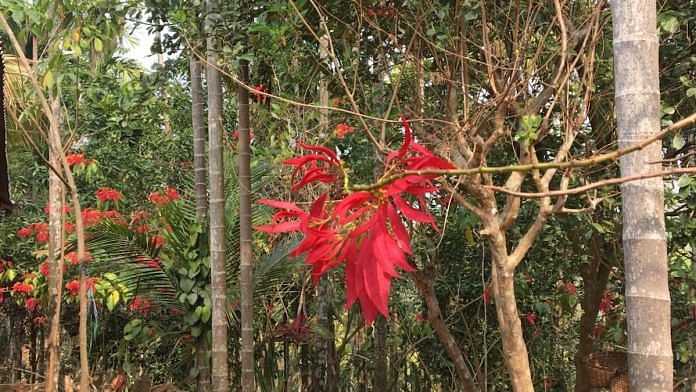I live in a small village called Chiringmagre in Meghalaya’s South Garo Hills. You have to walk six hours through a river and jungle to reach my village from the nearest road. The path skirts around the densest part of the forest, a section we call the sacred forest or, in Garo, a song kosi.
This is a special place. Outsiders are forbidden from entering the sacred forest. It is a patch of pristine greenery where no one, not even a member of our tribe, can cause any harm to the trees, flowers, or animals there. It has been this way for as long as I can remember, and my forefathers before that. And like any ancient tradition, there is a story behind it.
One of the most unique beliefs of the ancient indigenous Garo people is their faith in the one supreme spirit, who is the creator of all universes and preserver of all living beings. It is believed that man is unworthy of calling him by his name, so he is known by his manifestations and his work. The avatar of the one supreme being that acts as the preserver and protector of humans is known as Kalkame. The Garo people offer sacrifice to him once a year, thanking him for his work and praying for his continued protection.

Also read: From widespread hunting to wildlife conservation — how Manipur district took 180 degree turn
Traditionally, the place where the sacrifice is offered is preserved as a forest. It is home to different kinds of animals and birds. It is a vast forest area where no one can hunt, kill or harm any living beings, including animals, birds, insects, and even plants and trees. No one can even touch anything from that area, you cannot even spit there. It is a strong belief that if anyone disobeys, they will get sick, so everyone avoids making any mistakes in a sacred forest.
Chiringmagre’s sacred forest was established in the 17th century when Shri Wanding Ch. Marak, his wife Mejing M. Sangma and the villagers who bought our village land offered the first sacrifice here. It is located about 10 kilometres from Chokpot Block in South Garo Hills district, west of Rongmegre village, and covers an area of 97 bighas.
The practice of offering sacrifice continued till 1989, when it was stopped as most members of our tribe converted to Christianity. Though we no longer offer sacrifice to Kalkame, we have continued to preserve the forest as a village tradition, and will keep doing so in the future as well. Besides a variety of birds, animals and insects, more than 1,000 varieties of trees and plants are found in the sacred forest, including medicinal plants and wild fruit trees.
Besides the fear of the taboo, the reason we’ve been able to continue to protect the forest as a village reserve is due to our tribal culture, which is being kept alive in the northeast of India. One thing that all tribes have in common is their respect for nature.

Also read: 72-year-old Meghalaya woman revives Garo fashion with recycled material
In our tribe, the elders make decisions for the community and we all abide by them. The forest is our inherited wealth, and everyone in the village must follow the rules made for its protection or face a fine. Lastly, I also try to conduct programs to inform the people of my village about global warming, the impact of cutting trees, and the need to preserve our biodiversity.
Our tribe has created a village group, of which I am the president, to maintain and protect this reserve. We want to look after the forest so it can be a home for a diversity of animals, birds and plants. The forest is also our water catchment area that helps us ensure we will have resources for the future. This way we can also preserve the stone monuments that were erected here by our forefathers.
Our tribes live in the forest and understand the value of using its resources wisely as our survival depends on it. I believe that ancient traditions can play a huge role in designing modern sustainability practices. From them, we can learn to live with nature.
Hear audio snippets of this story
Witerson M. Sangma is a social worker, teacher and Global Himalayan Expedition (GHE) project manager for village development projects in Meghalaya. His father was a farmer and he was the second of five children and grew up in poverty. He believes that God has a plan for each one of us, and it was his plan that a child with no money for books would grow up to become a headmaster in a college. And that a person who had no electricity in his own village has now helped to electrify 20 villages in the state.
Voices of Rural India is a curated platform for rural storytellers. For perhaps the first time, it brings you stories from India’s rural communities, in their own voices.
This article has been republished with permission. Read the original article here.




Shut up Neelmani. People have every right to their own faith.
Very soon we will need a passport kind of documents to travel in.. The new Kashmir of North East India….the central government is waiting for all Hindu population of the state to migrate or get killed like it happn in Kashmir… 20 years a go…..
Very good information, meghalay has its own natural beauty of flora and fauna,it has a very high number of forest cover which consists of many flowers,fruits, vegetation,it is known as the cloud state of India ,it has many tribes and thi state is very green and clean,thank you for sharing this info.
The ultimate goal was to provide protection to the limited biome and that was thought at the earliest by ancestors. But what I found contradictory in this article that, at one hand you are preserving trees and animals and at the other end you’re sacrificing them, let it be them from outside the forest area but you’re sacrificing inside it. If anyone can’t cut the trees then how natives of the village managed to dwell in the forest? “Faith doesn’t comes up with logic!”- Neelmani